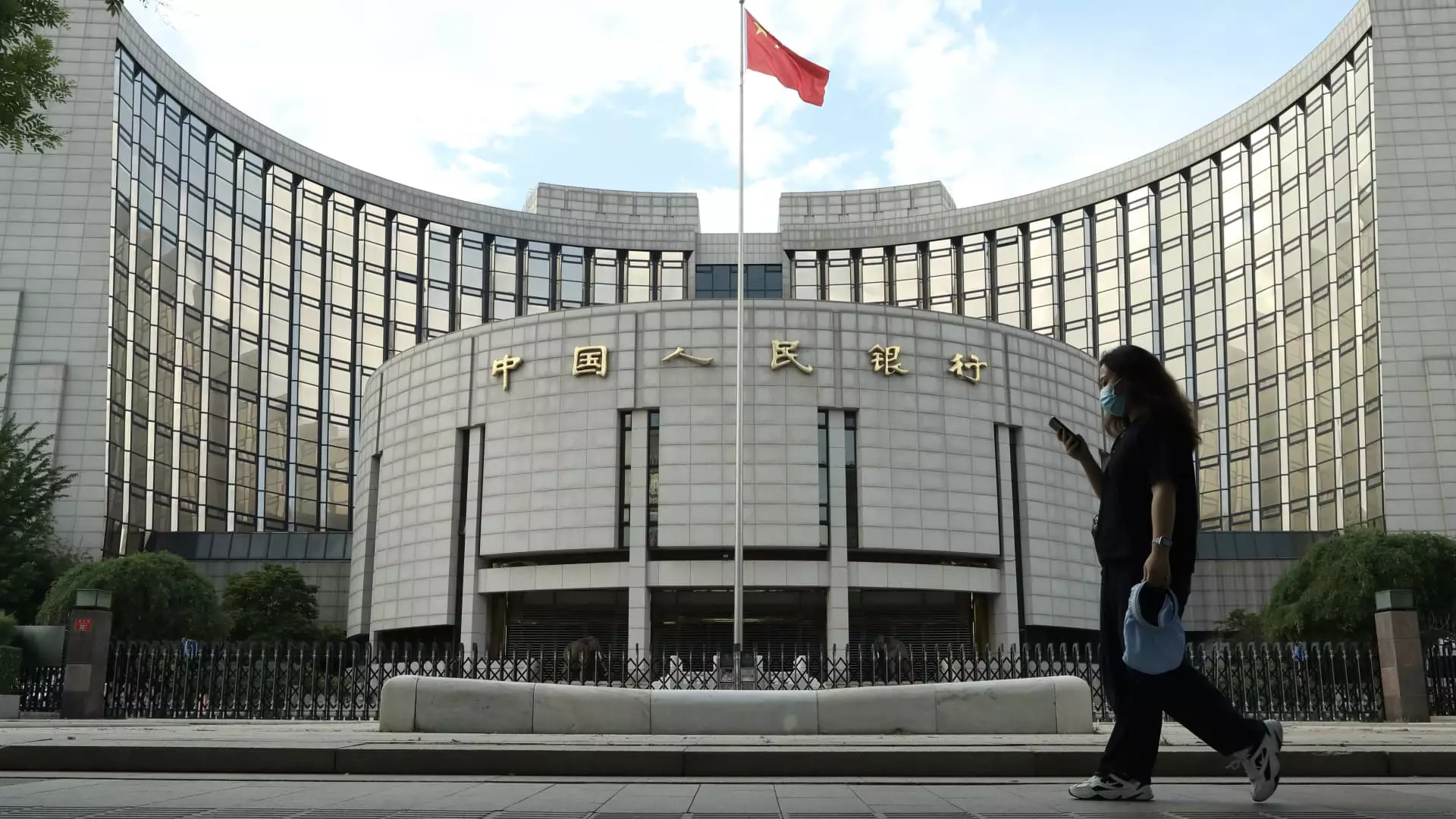On Monday, China took a significant step in its monetary policy by reducing its main benchmark lending rates by 25 basis points. The People’s Bank of China (PBOC) announced that the one-year loan prime rate (LPR) is now set at 3.1%, while the five-year LPR has been adjusted to 3.6%. These rates are crucial in shaping the financial landscape of China, with the one-year LPR primarily influencing corporate loans and household financing, whereas the five-year LPR affects mortgage calculations.
The rationale behind such a move is rooted in the need for stimulating economic activity in the world’s second-largest economy. By lowering the cost of borrowing, China aims to encourage investments and consumer spending, vital components for revitalizing its languishing economy. This decision was somewhat anticipated, as central bank governor Pan Gongsheng had hinted at the possibility of these cuts during a forum in Beijing, where he posited that further monetary easing could be on the horizon.
In conjunction with the LPR reductions, the PBOC has signaled that additional measures might follow. Governor Pan mentioned during the same forum that the reserve requirement ratio (RRR)—the amount of liquid cash banks must hold in reserve—could be reduced by another 25 to 50 basis points by year-end, contingent on the liquidity climate. Coupled with the anticipated cuts to the seven-day reverse repurchase rate and the medium-term lending facility rate, these adjustments collectively point towards a broadening strategy aimed at expanding liquidity in the financial system.
This ongoing cycle of rate reductions is indicative of a central bank reacting dynamically to the prevailing economic conditions, seeking to inject vitality into a system that has shown signs of stagnation. Economists like Shane Oliver observe that while these efforts reflect an essential aspect of monetary stimulus, they may not single-handedly rectify the deeper issues affecting demand within China’s economy. Oliver emphasizes that while cheaper borrowing can spur activity, ultimately, it is the demand-side factors that require additional fiscal support for sustainable growth.
Critical voices within the economic discourse highlight that the adjustments being made by the PBOC are unlikely to provide a panacea for China’s current economic malaise. Zhiwei Zhang, President and Chief Economist at Pinpoint Asset Management, elucidates that despite the cuts in interest rates, China’s real interest rates remain relatively high. He forecasts further rate reductions in the coming year, particularly as the global monetary environment evolves, with potential easing from the U.S. Federal Reserve influencing local decisions.
These insights underscore the complexity of China’s current economic predicament, characterized by a distressed property market and tepid consumer sentiment. The latest GDP figures, revealing a growth rate of 4.6% year-on-year, offer some optimism; however, this must be contextualized within a broader landscape of slowing economic activity and persistent vulnerabilities.
As China seeks to navigate these tumultuous economic waters, it becomes increasingly clear that merely adjusting interest rates will not suffice. Analysts and policymakers need to adopt a more holistic approach, including substantial fiscal stimulus aimed at invigorating domestic demand and restoring consumer confidence. With the ever-present backdrop of a weakening property sector, robust strategies that extend beyond monetary policy are crucial for addressing the underlying challenges facing the economy.
The recent lending rate cuts by the PBOC are a noteworthy response to immediate economic pressures, but they are just one part of a larger narrative. As China continues to grapple with its economic realities, close attention must be paid to the interconnectedness of monetary policies and broader fiscal strategies, ensuring that all elements work in concert to foster long-term stability and growth.

